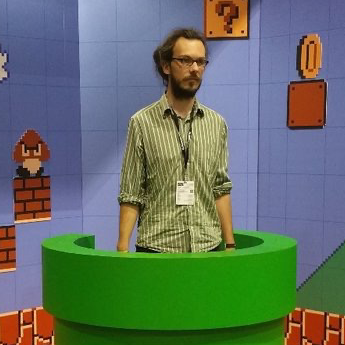i really miss the feel of early-mid-90s coffee shops. cozy, comfy, neighborhood coffeshops. like your local bar, but for the morning/afternoons. local coffee, local foodstuffs, and locals. it was a hangout spot and often had open internet workstations for that sort of stuff (obviously long before wifi and juuuust about when broadband was becoming commercially available). these were chill spaces for work, hanging out, meeting up, or just grabbing a quick cup of coffee and a biscotti.
fuck you Starsucks for killing these wonderful places.
deleted
anodyne clones of uncomfortable spaces designed to pump out profits and burnt, sugar-bombed coffee drinks?
It’s all in the 3 ring binder.
You confused me for a sec, I’ve enjoyed Anodyne Coffee Roasting lots and thought their space is plenty comfortable lol
But even Starbucks has fallen far from its roots. Does nobody remember the ‘90s Starbucks that were actually comfortable places with good wifi, good living room seating like couches and low tables? Some had small libraries of free books and newspapers? The coffee was actually pretty good! The pastries were pretty darn good too, with a wide variety.
Now it’s all institutional, cheap metal hard seats. The spaces are smaller and far less welcoming. The pastries come out of a plastic bag. They want you to buy your shit and leave.
For the record - I travel a LOT. If you want to go to a coffee shop and look for instagram shops, that’s what you’ll find. Any decent city has its own independent shops with a variety of styles and better coffee than any chain.
I’ve been to several coffee shops through the years that also had local artists that helped with the decor, and local musicians playing a couple days a week.
For whatever reason I’ve never really looked at a coffee shop as a bar/pub for daytime folks but I guess that’s what a lot of them kind of were.
I remember this time. It seems wild to me that I used to simply walk down to the coffee shop, just to hang out after work or on the weekend. I remember whiling away hours and hours, often closing out the shop and having to move to another coffee shop to continue a conversation. I didn’t even have a smartphone lol it was amazing
And I’m a mad introvert, I don’t know what it was about that time and place… would be nice if young people could have that again
It’s not just coffee shops. It’s hotel rooms and restaurants and homes. Hell, even our cars only come in two shapes now: Egg and Box. And three colors: White, gray, or black
It’s called fashion. Give it a decade, something else will become fashion.
I thought it was called a fad.
That’s just fashion you don’t like 😄
Reminds me of this article https://www.alexmurrell.co.uk/articles/the-age-of-average where the author pulls in different examples of designs and aesthetics converging to some “average”.
I’m feeling conflicted with these trends, on one hand it seems like things are becoming more accessible, while on another, feels like a loss.
This especially may be relevant with generative AI - at least for the very few generative arts I look at, at some point they start to feel the same, impersonal.
I can’t access the research article “craic in a box: commodifying and exporting the irish pub” anymore, but there’s a decent enough Vice article that goes over it: https://www.vice.com/en/article/a3d8gb/why-irish-pubs-became-the-biggest-food-and-drink-export-since-mcdonalds
Basically corporations packaged up and sold the theme and decorations that made Irish pubs feel authentic.
I wonder if using AI/ML is just the natural evolution of that kinda thing.
This is part of the reason I love driving a (BMW) Mini. It’s not the best car in the world, but it looks different to all the other cars. And drives like a go kart.
Haha capatalism no food
One of the most obvious signs of the arrival of Idiocracy times was the 21st Century truck designs that all have a square, flat front end like a massive brick wall. As if no engineer who worked on the design of those has ever heard of wind resistance and fuel efficiency.
Isn’t that two more colours than Henry Ford gave you! Sheesh! Ungrateful much!
How bleak. A couple proprietary algorithms driving millions of business decisions across the globe, everyday.
Before algorithms, it was just whoever was considered the best consultant. I don’t really see much difference here between using humans to look at data and figure out what things may have an effect at bringing in customers or otherwise increasing profits and a machine doing the same thing other than the machine doing it faster and better.
That’s just on the whole “everything is the same” front, though. It is bleak for the humans that are going to be replaced by the machine.
What’s different is the feedback loop and the globalization. Yes, it’s just capitalism, ie giving the people what they “want”, but it’s really not just the same as someone suggesting that customers like clean lines and plants.
The feedback loop is the most disturbing part, IMO. You have an algorithm deciding what gets popular, which means creatives hoping to be financially sustainable have to cater to it to some degree, which reinforces the algorithm and removes a little bit of uniqueness from society.
Creative people have always had to consider"what sells" to some degree if they want to make money from their effort, but we’ve gone beyond artists making “art with some degrees of marketability” into making products called “art” with little of the emotional/intellectual "challenge’ that comes with unique works.
I will offer an alternate explanation:
Restaurants (and by extension, coffee shop) are inherently very risky businesses to start and operation, I think over 90 percent of them fail in the first year. So, to increase the chances of survival, you have to make sure your business is ran as efficiently as possible, things like rent and location is outside of your control, so you always want to maximize the value of every dollar you spend.
The first people notice when they go into a new restaurant is cleanliness, nobody wants to eat at a new place that looks dirty, you can only get away from that if you are a decades old local hole in the wall. Ease of cleaning, therefore, is the number 1 priority over everything else.
So, why the “industrial” concrete/tiled floor and metal chair? Because you can just hose them down at the end of the day. Same thing with big open wooden tables and sparce renovations, ease of cleaning.
The second thing is you have to avoid major renovations, make the with the space you have and maximize the amount of interesting decorations for the minimum money/work.
Why put subway tiles on white walls for decorations? Because you don’t have to hire painters, and subway tiles are cheap and interesting looking.
Why use big open windows and only dim Edison bulbs for lighting? Because hiring electricians to rewire the place you rent for lighting is a lot more expensive than using the big windows you already have.
Why avocado toast? Because coffee is your main focus, the food is important but secondary, and a piece of fruit on a piece of bread pretty much doesn’t require any cooking.
It’s really the operation efficiency, rather than some trend following “Instagram” asthetics that led to all these coffee shop looking the same, I think this is a better explanation than what this article proposes.
I’ve begun a new job at a ✨cool✨ (legitimately) local coffee shop. Not my first career choice, but I’ve moved countries and I value people over money. Anyway, that’s a different story.
Why avocado toast? Because coffee is your main focus
Ex-fuckin’-actly. We prepare high-quality coffee and for a small team sourcing from farmers halfway across the world ensuring that it stays high-quality is the main focus. There are 3 bakeries within a short walking distance if you want food.
Besides that, it’s the familiarity that drives coffee shops to look like coffee shops. You wouldn’t expect a black metal album cover to look like a jazz record album for the most part unless you’re deliberately playing a trick.
That said I do enjoy it when people twist formulas, but obviously, it’s a risk for business. In my case, the cafe that I work in could be found all over Europe, but locally it remains a twist on what the locals usually do. And I think that’s where the feeling of uniqueness comes from.
The article points out a valid critique that I’ve mulled over in my own head:
Only certain types of people were encouraged to feel comfortable in the zone of AirSpace, and others were actively filtered out. It required money and a certain fluency for someone to be comfortable with the characteristic act of plunking down a laptop on one of the generic cafes’ broad tables and sitting there for hours, akin to learning the unspoken etiquette of a cocktail bar in a luxury hotel. The AirSpace cafes “are oppressive, in the sense that they are exclusive and expensive”, Gonzalez said. When whiteness and wealth are posed as the norm, a kind of force field of aesthetics and ideology keeps out anyone who does not fit the template.
And goes to interesting places recounting the history of instagrammability, the tyranny of the algorithm and the experiences of the owners of the coffeeshops. Overall a good read.
It is happening in my industry as well. A lot of our part suppliers are converging. Our systems look and act like our competition. It is a losing battle, I try to keep pushing but the problem is bigger than I am. Eventually all the value adds all the uniqueness gets removed and it becomes a race to the bottom. Who can make the same that hit the platonic form and do it for the least amount of money.
Interesting article. It reminded me of this story:
They frame that one as wholesome. I suppose in a way it is.
But it’s also kind of dystopian. People lost interest in a nice place that serves food and drink they enjoy… simply because it wasn’t trending on the internet. If you don’t actively participate in the phoney curated bullshit and stay on top of the mercurial whims of social media, you quickly cease to exist.
It’s like people forgot restaurants are there to serve you meals, not to be a photo op so you can enjoy a 15 second endorphin rush.
I’m not surprised, though. People put their own lives and the lives of others at risk all the time so they can drive and text. I see it every time I drive. Literally risking killing themselves and other people because of internet-brain.
As for the homogeneous nature of these cafes and places, I’m not sure that’s a very new phenomenon. Diners and hotels from the 1950s and beyond have always been pretty similar to each other. I guess social media also makes that worse, though. Copy everyone else faster or go out of business model.
More people are also not able to afford eating out as often anymore, as rent and costs increase but salaries stagnate.
Seems relevant … Ted Gioia’s article on “Signs you’re living in a world without a counter culture”: https://www.honest-broker.com/p/14-warning-signs-that-you-are-living
In general, it’s a very older-gen (boomer/x-gen) point to make at the moment, but it’s probably one of the nostalgic points worth taking seriously. I’m sure today there are certainly counter cultures. My bet is that compared to the past, they’re harder to find, generally more numerous and probably more nebulous and hard to pin down unless you’re “in them”, and, problematically, I’d imagine they tend to be “thinner” and more fragile … less “alternative world views” and more “particular vibe specific to a time and place”. Genuinely curious topic for me though.
I never thought about this but it certainly feels true. The vibe I mostly get from young people is a lot of resentment of boomers (understandable) and a general hopelessness / nihilism (also understandable) and a desire for inclusion and diversity (positives) but not a lot of cohesive fighting spirit.
There have been some serious efforts (protests about school shootings, Occupy Wall Street, BLM, ANTIFA, Greta, etc) but they all kind of fizzle out when the next big culture war diversion comes along. The establishment has mastered their ability to divide and conquer working class folks. As easy as it is to hold contempt for boomers, the hippie counterculture did have a massive impact.
As easy as it is to hold contempt for boomers, the hippie counterculture did have a massive impact.
Resonates with my personal critique of my generation (millennial) … however “unlucky” we are to suffer the transition out of the post-war period and “suffer” the boomers … we’re a relatively ineffectual and entitled bunch TBH, however much that is our fault or our circumstances.
We’re the generation that have gone ahead and made a bunch of life decisions because it was what we were “supposed” to do. We’re the generation that trusted and to some extent still trusts the system, and, expects there to be a system that is trust worthy … which aren’t bad virtues or expectations, but certainly helps explain how a generation can share a ubiquitous dissatisfaction with how the world ends up working and the future we’re heading toward but still struggle to work up the motivation to get up and do something about it. In a way, we’ve been betrayed by our elders and we don’t know what to do about it and how sad we and empty we feel about it.
And simultaneously, we’re the generation that’s as plugged in to consuming and responding to the input of big giant systems as ever. (Over-)Education[1], TV, Internet, social media, 24hr news, globalisation. Our attention spans are short, our concerns our ephemeral or fed to us by the mainstream, and we feel smaller and smaller against the great tide of content and input over which have no control and in which even less stakes. We’re the “stay in your lane” and doom-scroll generation … which makes us ill-prepared and ill-suited for changing the kind of systems we rely on. When something feels too big or too hard, we’re more likely to sit alone, pick up our phones and doom-scroll for some dopamine than we are to look around to our peers sitting next to us for support and dig in together.
And to bring this back to the fediverse … many on here celebrate how it feels like the old internet that the remember (old twitter or usenet). I’ve always personally found that problematic.
On a basic level, nostalgia can be dangerous in its indifference to the present … old twitter and usenet and the old internet are kinda dead and the fediverse should lean in to being its own thing, however much that borrows from what once was.
More specifically, social media for the younger generation is a different thing … they didn’t use the internet in the 90s and never will. Some of them have only seen twitter, youtube and tiktok and can’t help but compare anything like the fediverse, however much they might be interested in its ideas, to the social media they know.
So for me, us millennials, I think we’re kind of broken, and heading into the physical age where we’re custodians of our experience and the lessons that ought to have been learnt from it, and no longer “the generation” that the world should care about and be making social media platforms for.
We should be making an internet for the younger generations, one that is better than what our X-gen/Boomer capitalist seniors gave them and gives them a chance to understand and use the knowledge sharing, exploration and independence the technology can provide.
I’ve got nothing against education per se, but I feel that a lot of education is rather shallow, manufactured and focused on “certification” rather than useful and meaningful understandings, ideas and skills. ↩︎
I think when we discuss generations, a trap we all fall into (including me) is stereotyping. We tend to think of each generation as a monolith.
Within my own generation (X) I grew up with people who were extremely pro-establishment, people who were extremely anti-establishment, and many in the middle.
I agree that Millenials are better educated. As for the overall quality of that educational content, your criticism could apply to almost all of us. When I was in public school, you would barely know that other countries even exist. Geography, world history, and global subjects were barely covered. US “exceptionalism” eclipsed all of it.
The boomers outnumbered the Greatest Generation and the Silent Generation. And they were louder per pound, too. They still dominate in many ways (especially government and board rooms) even though they are quite old and 1/3 of them are gone.
So it’s not entirely learned helplessness among the young. It’s a true power imbalance.
Just hope it’s not too late after their power finally crumbles.
You make very well expressed and thought provoking arguments!
And while I can recognise myself in a lot of what you’re saying, I think that us millennials are just now beginning to reach the age (28 to 42 this year, by the definition I follow) where we have some weight to affect that system from the position in it that we grew up in.
Any of us who wants to make our own space: work on a good website, start a coffee shop the way we want it, run a node in a federated social network… I feel it’s not until now that any of us have had the skillset, long-term motivation and economical position to be able to do any of those things seriously. Building a better internet is what we are doing right here and now :)
Great response!
From a millennial perspective, the next 10-20 years are certainly going to be “our moment” … and yea, I’m personally interested in and looking forward to seeing how much the vibe shifts from a boomer dominated to millennial dominated world. Without wanting to shit on boomers or anything, I’d guess that it’ll be a mixed bag. There will be real sigh of relief as we shake off some simply old, privileged and egocentric perspectives … but also some frustrations as we have to face our own versions “douche bag” and shitty systems.
There have been some serious efforts (protests about school shootings, Occupy Wall Street, BLM, ANTIFA, Greta, etc) but they all kind of fizzle out when the next big culture war diversion comes along.
Either that or maybe the FBI has just gotten really good at disrupting them.
My first reaction was that this excerpt reminds me of a piece I wrote two years ago called “The Airbnb-ification of the arts”, about how artists looking to make a career out of art are forced to cater to an algorithm that favors comfortable predictability over depth or uniqueness. My essay was heavily inspired by Kyle Chayka’s famous 2016 essay “Welcome to Airspace”.
Jokes on me for not reading the byline because it turns out Kyle wrote the book this excerpt is from! lol good for him. Looking forward to reading it.
I’m curious to know if he has a presence on Mastodon or any other Social Web apps, he’s a really great writer I’d like to follow.
Probably to make people feel like they’ve been there before, so they won’t hesitate to buy things from a new store
This is the best summary I could come up with:
Inevitably, I could quickly identify a cafe among the search results that had the requisite qualities: plentiful daylight through large storefront windows; industrial-size wood tables for accessible seating; a bright interior with walls painted white or covered in subway tiles; and wifi available for writing or procrastinating.
Accoutrements such as lights made from rusty plumbing fixtures were left behind in favour of houseplants (succulents especially) and highly textured fibre art, evoking west coast bohemia more than hardscrabble New York City.
You can ease into that space because it’s such a familiar space.” The homogeneity contrasted with the overall hipster philosophy of the 2010s, namely, that by consuming certain products and cultural artefacts you could proclaim your own uniqueness apart from the mainstream crowd – in this case a particular coffee shop rather than an obscure band or clothing brand.
It required money and a certain fluency for someone to be comfortable with the characteristic act of plunking down a laptop on one of the generic cafes’ broad tables and sitting there for hours, akin to learning the unspoken etiquette of a cocktail bar in a luxury hotel.
“Everything else is damage control.” We talk about politics, culture and travel becoming globalised, but on a more fundamental level, Spivak is correct that what really flows across the planet are various forms of money and information: investments, corporations, infrastructure, server farms and the combined data of all the digital platforms, sluicing invisibly like wind or ocean currents between nations.
Pursuing Instagrammability is a trap: the fast growth that comes with adopting a recognisable template, whether for a physical space or purely digital content, gives way to the daily grind of keeping up posts and figuring out the latest twists of the algorithm – which hashtags, memes or formats need to be followed.
The original article contains 4,235 words, the summary contains 300 words. Saved 93%. I’m a bot and I’m open source!















